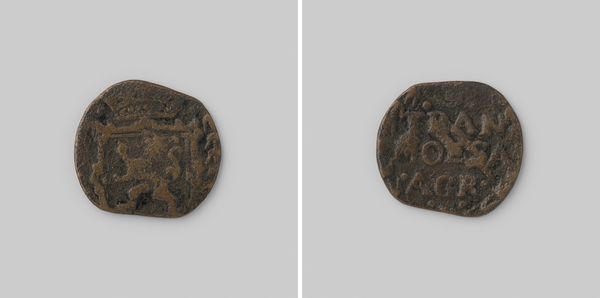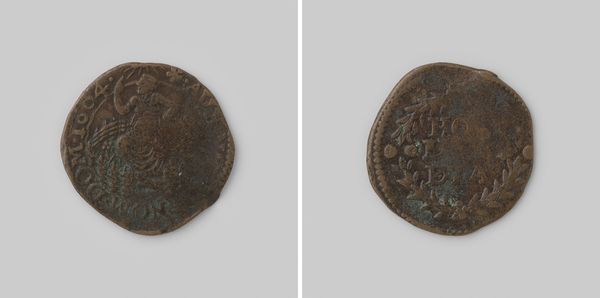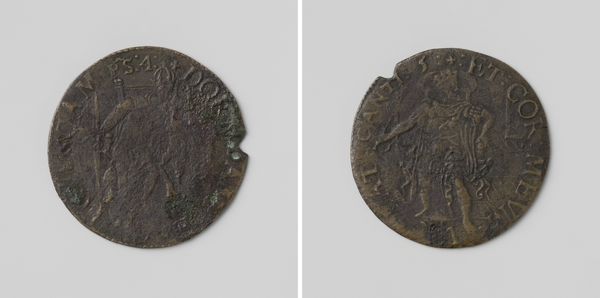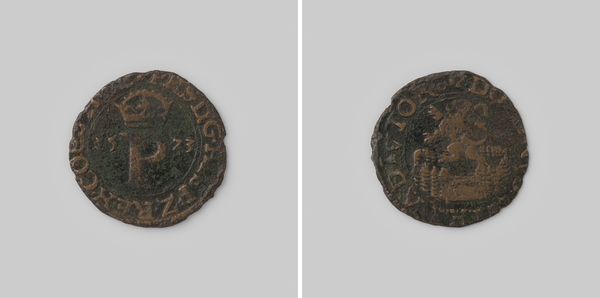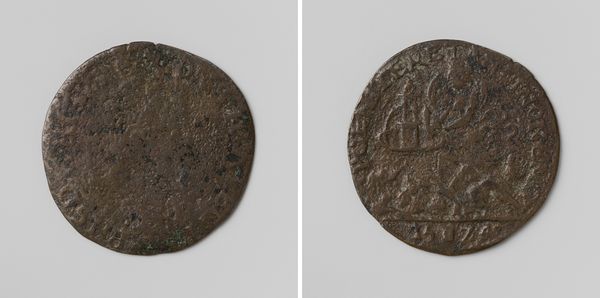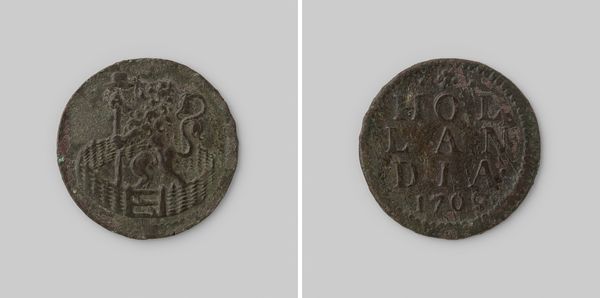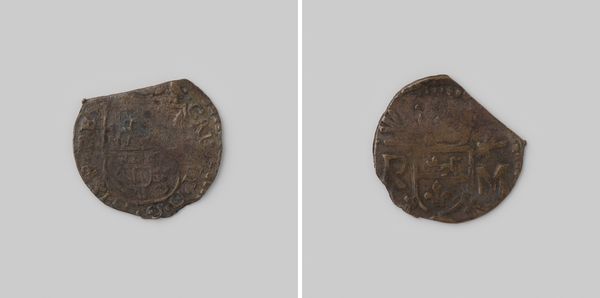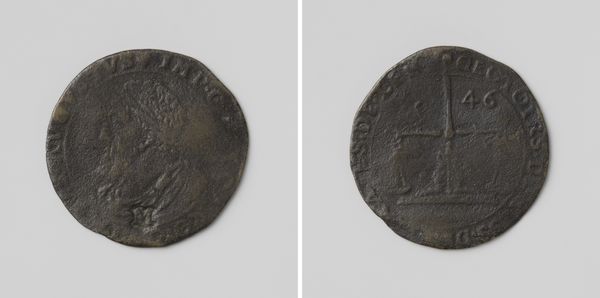
carving, print, metal, embossing, sculpture
#
medieval
#
carving
#
dutch-golden-age
# print
#
metal
#
sculpture
#
embossing
#
sculpture
#
carved
Dimensions: diameter 2.1 cm, weight 1.66 gr
Copyright: Rijks Museum: Open Domain
Editor: So this is the "Batenburgse Duit," a coin dating back to somewhere between 1612 and 1641. It's so small, and the metal looks quite worn. One side has a heraldic crest, the other an inscription... What stands out to you when you look at this piece? Curator: I see a convergence of power and daily life made manifest in symbolic form. This isn't just a coin; it’s a tiny monument to the Bronckhorst-Batenburg-Steyn family, signaling their authority even in mundane transactions. Look closely—the lion rampant signifies courage and nobility, a claim to a heroic past, and to God-given entitlement. Editor: A claim? How so? Curator: Heraldry was always aspirational. Families used these emblems to broadcast their lineage, their virtues, and their ambitions. The symbols acted as visual mnemonic devices that triggered loyalty in allies and possibly fear in rivals. Consider also that even the act of minting coins was, itself, an assertion of sovereign privilege, something that only they can grant its value and trustworthiness. Editor: That’s a powerful statement for something so small. The inscription too… what does that say? Curator: That script is a bit challenging to decipher at a glance. But in this era, inscriptions and emblems became crucial in affirming the social and political status of the family within a broader European network, particularly as new power struggles changed traditional hierarchies. Editor: I hadn't really considered the symbolic weight an everyday object like a coin could carry. Curator: Indeed, understanding these symbols offers us glimpses into the psychology of power and status from centuries ago. This seemingly simple coin speaks volumes! Editor: It’s amazing how much cultural information is embedded in such a tiny, unassuming artifact.
Comments
No comments
Be the first to comment and join the conversation on the ultimate creative platform.

